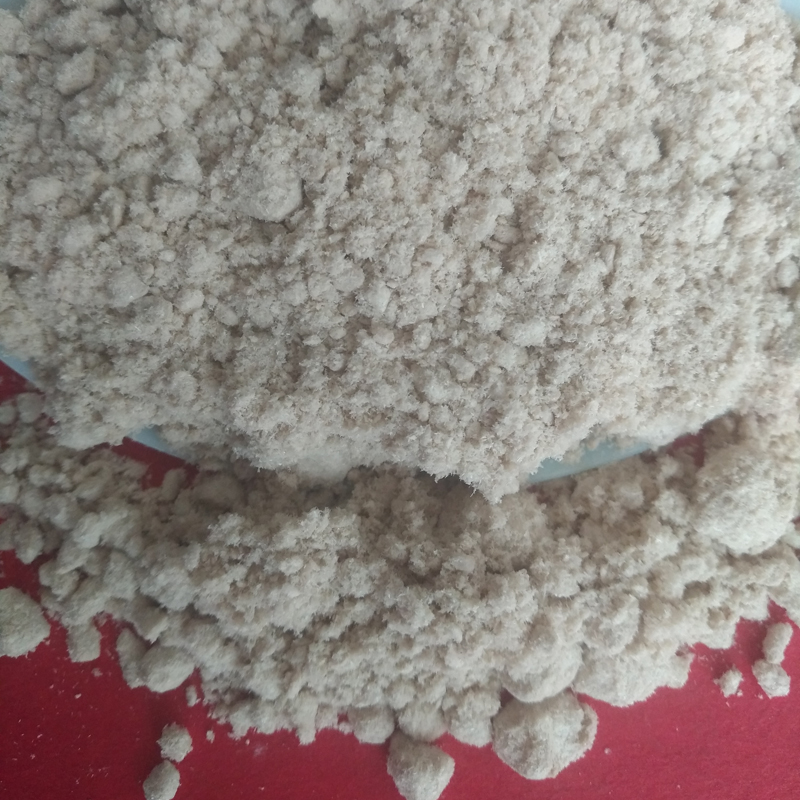

Popular search: industrial salt , Soda ash , Calcium chloride , Magnesium chloride , Magnesium oxide ,


Calcium sulfate is a white monoclinic crystal or crystalline powder. Odorless. It is hygroscopic. One molecule of crystal water was lost at 128 ° C, and all of the water was lost at 163 ° C. Soluble in acid, sodium thiosulfate and ammonium salt solution, soluble in 400 parts of water, less soluble in hot water, very slowly soluble in glycerin, almost insoluble in ethanol and most organic solvents. The relative density is 2.32. Irritating. It usually contains 2 crystal waters, which exist in the form of gypsum ore in nature.
Chemical properties
Calcium sulfide and carbon dioxide can be formed by the action of carbon at high temperatures. Raw gypsum CaS
O4·2H2O is a natural mineral which is a transparent or translucent plate or fibrous crystal of white, light yellow, light pink to gray. It is brittle, loses 1.5H2O at 128 °C, and loses 2H2O at 163 °C. Industrially, the raw gypsum is heated to 150 ° C dehydrated mature gypsum CaSO4 · 0.5H2O (or calcined gypsum), and the water is converted into CaSO4 · 2H2O. According to this, it can be used for plaster bandages, plaster models, chalks, handicrafts, and building materials. Gypsum is also used as a cement speed regulator to control its hardening speed. Paint putty and paper filler are also used for plaster. Daily tofu can be used as a coagulant. Gypsum is applied in agriculture to reduce the alkalinity of the soil. Gypsum mine and coal can be used to produce sulfuric acid at high temperatures. The solubility of CaSO4 is not large, and its solubility is a special first increase and then decrease. For example, the solubility at 10 ° C is 0.1928 g / 100 g water (the same below), 40 ° C is 0.2097, 100 ° C is reduced to 0.1619, so that the hard water dissolved calcium sulfate scales in the high pressure boiler (up to 400 ° C), causing harm, should The CaSO4 was previously converted to a more insoluble CaCO3 precipitate (its solubility: 0.0015 g) with Na2CO3 to remove (soften the hard water). When the marble is diluted with H2SO4, the formation of sparingly soluble CaSO4 on the surface of the marble hinders contact with the acid, and the reaction is stopped. Therefore, CO2 cannot be obtained by using dilute H2SO4 and marble.
Chemical equation: CaCO3+H2SO4===CaSO4 (slightly soluble in water)+H2O+CO2↑
Uses
gypsum
gypsum
nitrogen fertilizer production analysis of trace carbon monoxide and carbon dioxide as moisture absorbent, paint, artificial ivory, paint, paper, dye, printing, metallurgy Treat water. As a food additive and processing aid, medicine.
Used as cement raw material; used as cement retarder; gypsum
In addition to a large number of used as building materials and cement raw materials, it is widely used in rubber, plastics, fertilizers, pesticides, paints, textiles, food, medicine, paper, daily chemicals, arts and crafts, culture and education. In areas where sulfur resources are scarce, sulfuric acid and ammonium sulfate can be used. Colorless and transparent gypsum can be used as an optical material. It is a raw material for the manufacture of cement, calcium sulfate hemihydrate and sulfuric acid. Used as a filler in the paint and paper industry. Used as fertilizer in agriculture, it can reduce soil alkalinity and improve soil performance. It is also used as a tissue strengthening agent in canned tomatoes, canned potatoes, a hardener for brewing water, a flavor enhancer for wine, and the like. Various models can be made for building materials and cement production, and used as plaster bandages in medical treatment. In addition, it can also be used to adjust the setting time of cement, as a white pigment for paint, a filler for paper and a polishing powder. It is also a commonly used desiccant. Also used in metallurgy and agriculture. Also used as a bread improver.
| Last page:Anhydrous calcium sulfate | Next page Calcium sulfate |
Home | About Us | Product | News | Case | Culture | Enquiry | Contact us Copyright(C)2019, Shanghai Qiren Chemical Co., Ltd. All Rights Reserved. Supported by ChemNet ChinaChemNet Toocle Copyright Notice